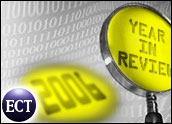
Thanks to the increased processing power of today’s microprocessors and significantly improved data access and storage technology, it has become easier than ever to apply some rather sophisticated statistical analyses to better understand both business processes and customer behavior.
However, the rapidly growing amount of data that businesses are collecting and storing begs for better and faster organization and processing.
That places a strain on people throughout an organization from management to staff down on the manufacturing floor, in the field, customer service center, storefront and IT department.
BI Coming Up Fast
Combining data mining, statistical and numerical analysis and data visualization, the use of business intelligence (BI) applications is, as a result, spreading fast.
What is differentiating competitors in the field is the BI application’s ability to perform compound, ad hoc queries on large data sets on the fly and graphically display and distribute results in an intuitive, easily comprehensible format.
“Many organizations find themselves increasingly overwhelmed with data, and it is not uncommon for corporate departments to run hundreds of reports on a daily basis. However, these reports are often of minimal help to executives or business analysts seeking to use the data to make decisions,” Doug Cogswell, CEO of BI systems developer Advizor Solutions, told CRM Buyer.
“Most business problems are inherently multidimensional, and how those dimensions are displayed makes all the difference,” Cogswell said. “When companies turn to the market for assistance, it becomes obvious that there is an enormous gap between reporting programs and very expensive, high-end analytical offerings which require individuals with statistics and/or programming expertise.”
“When combined with data mining and spatial BI, both public and private sector agencies have found they can better understand their markets, develop strategies to better serve their customers, and significantly increase their own efficiencies,” claimed Terry Bills, transportation industry manager at ESRI. “The same holds true with the application of demand forecasting, and logistics and supply chain management to geographic information systems.”
Usability Sciences
As its name suggests, Usability Sciences is a company that tests the ease of use, or usability, of Web sites and other products during the development process.
By observing Web site users’ behavior and determining what parts of a site work well and what doesn’t work well — and finding ways to make the site more intuitive, user-friendly and effective — the company’s “usability throughout the e-cycle” methodology determines what is of greater use and interest to the visitor and, hence, of greater value to the organization.
Embedded in a downloadable Usability Sciences applet is a proprietary method of encoding the stream of clicks produced by visitors to a particular site.
Combined with user survey data, company analysts can apply a suite of BI tools and methods to the data in order to glean greater insight into user behavior, as well as the workings and ease of use of the site.
“Our online survey technology is differentiated from other survey instruments by its ability to capture a respondent’s click stream data — their behavior — along with their direct survey answers, [or] their attitudes and metrics,” Jeff Schueler, Usability Sciences founder and CEO, told CRM Buyer. “Any number of BI tools would allow us to mine the attitudinal and metrics data, but only Advizor’s tools facilitate integrated investigation of the click stream data within the ‘regular’ survey data.”
‘Unfettered’ BI
The ability to sort, manipulate, query large data sets quickly and easily, and render results in a visually intuitive and comprehensible manner is a critical and distinguishing aspect of BI applications.
“Unlike SPSS, SAS and other complex tools, with Advizor you don’t need to worry about picking an algorithm, building a model, loading data, and interpreting the outputs — it all happens behind the scenes. We can do this because the mining modules connect to our in-memory data pool just like our visualization charts do. This means the mining is integrated to the charts through the data pool. A selection on a chart will go the mining, and output from the mining models will be reflected in the charts,” Advizor’s Cogswell asserted.
“We are unfettered,” he continued. “Our memory pool has the raw data, and we calculate and aggregate on the fly. We don’t presuppose any structure. This allows the user to navigate wherever they want whenever they want. And this can be across one table or many linked tables — something a legacy BI tool just can’t do.
“One of our bigger customers has 18 primary Oracle tables linked and joined in our memory pool. A selection on a chart attached to any one of these tables is immediately propagated and reflected in the charts showing dimensions from all the other tables.” Cogswell noted.
“Since the query tool is the chart, it’s very intuitive and allows the end-user to navigate across many, many dimensions. It’s essentially a pivot table on steroids,” he joked.
Within Advizor’s patented systems architecture is a set of 15 chart types designed to facilitate comprehension across the range of data being examined.
“The biggest challenge is keeping the displays aligned against things that matter [when] solving business problems, and not overwhelming the end-user who may not be graphically sophisticated. We have seen many examples of fancy 3-D charts, cool looking gizmos and doodads that just miss the mark. For us, the key is ‘perceptual effectiveness,’ not glitz or coolness,” Cogswell explained.
Graphical Objects are Key
Advizor’s graphical objects are the keys to its use. They can be used as the primary means of information discovery, as opposed to being used solely for presentation purposes.
“Advizor charts are linked and interactive, making them tools for discovery rather than just static displays that answer a single question,” Cogswell said.
“Our philosophy is to allow an untrained business analyst to use these tools with nothing more than a mouse,” he added.






















































